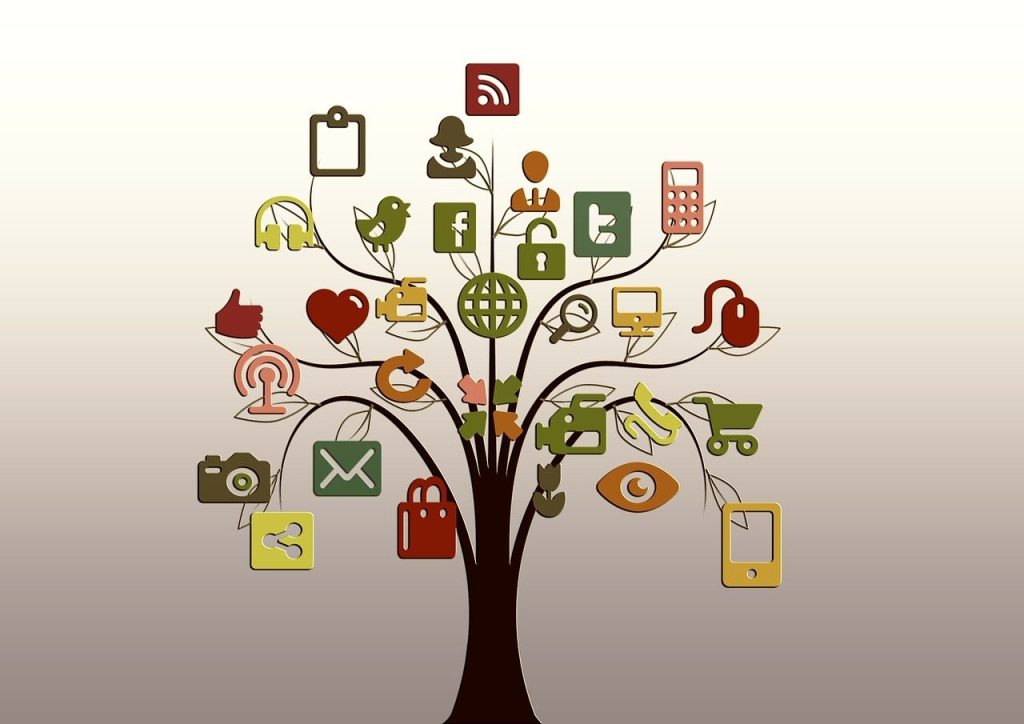ABET is constantly evolving to cater to the ever-changing literacy demands of the 21st century. Modern AET programmes teach more than just the ability to read, write and perform basic calculations. Equipped with foundational numeracy and literacy skills taught by ABET, individuals are also able to use technology to gather and communicate information.
The literacy skills now required by adults differ significantly to those of a decade ago. According to the International literacy Association (ILA), literacy in today’s world also means a proficiency in 21st century technology. ILA [https://www.literacyworldwide.org/about-us] consists of over 300 000 literacy educators, researchers and experts from more than 128 countries. The association provides support to literacy professionals and educators from all over the world.
There are now so many different concepts that attempt to explain the literacy skills needed in the 21st century. They include information literacy; multiliteracies/multiple literacies; new literacy; digital literacy; and web literacy. These terms expand the concepts of what it means to be literate and numerate and to process information in digital environments.
ABET for digital transition
ABET is an essential for South Africa’s digital transition. This is considering that AET imparts numeracy and literacy skills. These are the basis of the proficiencies needed to function effectively in this increasingly digitally connected era.
Worryingly, African countries continue to lag behind others in terms of digital literacy skills. According to Internet World Stats, Africa’s internet penetration is only 43%. This is the lowest compared with the rest of other continents. Refer to World Internet Users Statistics and 2023 World Population Stats (internetworldstats.com). The situation is due to a lack of information and communications infrastructure in these countries. Certainly, high illiteracy in sub-Saharan Africa is also a contributor.
Research undertaken by the University of Cape Town reveals the extent of the connectivity challenge that the continent faces. Mauritius is the only African country where 51% of the adult population owns a smartphone and a computer. Following closely behind Mauritius is Morocco at 40%; Cabo Verde at 39%; and Gabon at 37%. Only 36% of South Africans have access to the internet. This is despite South Africa being a highly developed country with sophisticated infrastructure on the continent.
Refer to Africa’s digital divide | UCT News. According to Polity.org.za, the North West and Limpopo have the lowest access to internet at home at 3,6% and 1,6%, respectively. Refer to https://www.polity.org.za/article/the-digital-divide-in-south-africas-higher-education-sector-why-public-internet-access-is-important-in-the-context-of-tertiary-education-2017-08-15.
Notably, low digital access was a major challenge for many learners during the Covid-19 lockdowns when teaching and learning had to be undertaken online. Only 67,1% of public-school learners were able to adapt to the “new normal”. Many public-school learners were restricted to radio or television broadcasts or textbooks and worksheets that were distributed to them. In contrast, more than 80% of learners who attended private schools were able to seamlessly adapt to remote learning. This is also fuelling education inequality in the country.
ABET teaches foundational skills
ABET teaches foundational literacy and numeracy skills to millions of South Africans who cannot read and write, least of all navigate advanced technologies. The Department of Higher Education and Training (DHET) also recently expressed its concerns about high functional illiteracy in the country. It has, therefore, called for wide scale rollout of AET programmes. As the DHET notes, “Illiteracy has no room in modern society since we live in the age of technology and information.”
These functionally illiterate individuals are being deprived the many benefits of information and communications technology.
Connectivity provides better access to health information and options and makes it easier to communicate with others. Moreover, it increases access to social services and benefits; empowers people with a sense of agency; and helps with searching and applying for jobs. Connectivity also facilitates participation in democracy and civic duties. Moreover, it improves the economy for everyone. According to a Deloitte study, a 10% increase in broadband access in 2014 would have resulted in more than 875 000 additional jobs in the US in 2019. This is in addition to a US$186 billion increase in economic output. Refer to Deloitte: Quantifying the Economic Impact of Closing the Digital Divide – Press release | Deloitte US.
The internet also improves education. This capability is yet to be harnessed in South Africa despite the role it can play in improving access to quality education in the country. Devices have been placed into the hands of educators and learners with the false expectation that positive outcomes will be achieved organically. The lockdowns taught us that educators and learners need enablement, cooperation and support to truly benefit from e-learning technologies. Refer to https://www.bizcommunity.com/Article/196/371/239179.html.
ABET geared at low-skilled employees
ABET is geared at low and semi-skilled employees and unemployed individuals. AET equips them with the literacy and numeracy skills that they need to participate in a modern economy. This is also an economy that is preparing to transition into the Fourth Industrial Revolution. High levels of illiteracy hinder this and, therefore, our ability to compete at a global level.
The introduction of digital technologies in the workplace has driven the demand for higher-level cognitive skills. These involve the understanding, interpretation, analysis and communication of complex information.
In 2003, David Autor, Frank Levy and Richard Murnane noted that employment was shifting away from jobs that involved routine cognitive and manual tasks. Companies now require employees who are able to solve problems for which there are no rules-based solutions. They also need to be able to interact with others to acquire or explain information or persuade them to act. Refer to The Skill Content of Recent Technological Change: An Empirical Exploration on JSTOR.
Most of the reading, computational and problem-solving skills relevant to a print environment remain applicable in technology-rich environments. However, some aspects of traditional skills are more important to navigate the sheer amount of information that is now easily accessible. There is also a need to be able to connect, evaluate and interpret this largely uncensored body of knowledge. Unlike print-based presentations, information displays in information and communication technology environments feature non-linearity, recursiveness and interactivity. Information is no longer just presented in printed texts and graphics but, increasingly, in the form of animation, audio and motion video.
In addition, people follow individual pathways when searching for information on the internet and create their own “texts”. Therefore, the total set of information that each individual encounter is unique. Refer to https://www.oecd.org/skills/piaac/PIAAC%20Framework%202012–%20Revised%2028oct2013_ebook.pdf.
ABET imparts information literacy skills
ABET imparts the basis of information literacy skills. AET teaches the literacy and numeracy skills that people need to access information and use it to solve problems.
Paul Zurkowiski was the first to identify, name and explain the concept of “information literacy”. In 1974, he compiled a 30-page report on the concept for the US National Commission on Libraries and Information Science on information literacy.
In 1976, Lee Burchinal developed Zurkowiski’s work, noting that information literacy required new skills that included an ability to locate and use information. Refer to https://personalpages.manchester.ac.uk/staff/drew.whitworth/burchinal.html.
In 1998, the concept of information literacy was developed even further by the American Library Association (ALA) [https://www.ala.org/]. The ALA noted that information literate people were able to recognise when information is needed. They are then able to locate, evaluate and effectively use it. The association also described information literate people as those “who have learned how to learn”.
This is because they know how knowledge is organised. Information literate people can also find information and use it in ways that others can learn from them. Importantly, they are also prepared for lifelong learning. This is because they can always find the information that they need to successfully complete tasks or make informed decisions.
The ALA also articulated the areas of competency to be considered information literate. They included an ability to recognise a need for information and identify what type of knowledge would address a particular problem. Information literate people are also able to find the required data and then evaluate, organise and use it to address the specified problem.
The term has provided the foundation for various literacy frameworks. However, by mainly focusing on information use, it is limited. Modern technologies have also enabled the use, as well as construction and dissemination of information.
ABET teaches literacy and numeracy

ABET or AET teaches people the literacy and numeracy skills that they need to communicate and make meaning from various modes. These include visual, audio, spatial, behavioural and gestural. This ability is known as multiliteracy, a term that was first defined by the New London Group in 1994. The group consisted of 10 researchers, educators and visionaries. Refer to https://learning-theories.com/multiliteracies-new-london-group.html.
Multiple literacy is another term that is used to describe the ability to communicate and make meaning from various modes. It depicts the ways people read and write in their lives. The definition includes various static texts, such as books, magazines, labels and pamphlets. This is in addition to non-print media, including music, art, film and television. These various modes of communicating affect the ways readers approach literacy situations.
In 2003, educator and researcher, Gunther Kress noted how literacy adapted according to different communication media. Refer to https://www.routledge.com/Literacy-in-the-New-Media-Age/Kress/p/book/9780415253567. In this groundbreaking book, he explains media shifts from print to screen. This, in turn, facilitated the use of various modes of communication. Kress uses the term “multimodality” to describe the different ways print and media are represented.
This is in addition to how they make up a large part of modern literacy concepts. These modes of communication include visual and audio and are presented via print, photos, videos or graphs. They affect the way people approach text. A case in point are graphic novels, which also require visual literacy skills to read for meaning. The dimensions of multimodal literacy expand the ways that readers acquire information and comprehend concepts.
ABET lays the foundation
ABET lays the foundation upon which new literacy skills can be developed. The literacy and numeracy skills taught by AET are the first step towards enabling low and semi-skilled individuals to work with new technologies.
New literacy skills refer to those proficiencies that transcend mere alphabetic writing, vocabulary knowledge and recall of information. Refer to https://www.researchgate.net/publication/228682372_Handbook_of_Research_on_New_Literacies. New technologies require different ways of conceiving and communicating meaning. These are presented in multiple types of media and modality as part of literacy.
In 2008, Julie Coiro noted that the internet had greatly impacted and changed views of literacy. New web-based tools that require specific, new skills are constantly being launched. Refer to https://www.academia.edu/181835/Coiro_J_2003_Reading_Comprehension_on_the_Internet_Expanding_our_understanding_of_reading_comprehension_to_encompass_new_literacies_The_Reading_Teacher_56_458_464.
There are many terms associated with new literacies. They include digital, 21st century, internet, media, information, information and communications technology, as well as computer literacy. These terms evolved to describe the skills needed to gather and communicate information using new technologies, such as the internet.
New literacies allow individuals to use the internet to identify important questions and locate and critically evaluate the usefulness of the information. They then use these skills to synthesise information to answer questions and communicate their findings to others.
Therefore, any skills that enable technological reading and writing skills could be considered new literacies. A case in point is blogging, which is essentially an online form of a journalling.
ABET teaches digital literacy skills
ABET teaches the basis of digital literacy skills. Individuals who hold AET Level 4 certificates have the literacy and numeracy skills needed to navigate an increasingly digitally connected world.
Digital literacy describes reading and writing tasks that use media that is powered by technology. Cornell University, therefore, defines digital literacy as the ability to find, evaluate, use, share and create content using information technologies and the internet. Refer to https://www.cornell.edu/.
In 2008, Barbara Jones-Kavalier and Suzanne Flannigan narrowed the definition of digital literacy. According to them, it is the ability to read and interpret media, including text, sound and images. This is to reproduce data and images via digital manipulation and evaluate and supply new knowledge that is derived from digital environments. Refer to https://er.educause.edu/articles/2006/4/connecting-the-digital-dots-literacy-of-the-21st-century.
In 2001, Marc Prensky coined terms to describe generational differences between learners. He referred to “digital natives and immigrants”. Prensky explains that digital immigrants are only exposed to technology later in life. Conversely, digital natives are born in the digital age. However, this does not necessarily mean that they are digitally literate and, therefore, able to use technology efficiently. This is so that they can synthesise and analyse the information that they access. Reference https://www.marcprensky.com/writing/Prensky%20-%20Digital%20Natives,%20Digital%20Immigrants%20-%20Part1.pdf.
In 2012, the International Society for Technology in Education (ISTE) [https://www.iste.org/] articulated the importance of digital literacy. According to the ISTE, individuals need to understand technology to analyse, learn and explore. It adds that “digital age skills” enable people to work, live and contribute to the social and civic fabric of their communities.
It also developed the National Educational technology Standards. These include skills related to creativity and innovation; communication and collaboration; and research and information fluency. This is in addition to those associated with critical thinking, problem solving and decision making; digital citizenship; and technology operations and concepts.
Skills taught by ABET
The numeracy and literacy skills taught by ABET or AET also form the basis of web or online literacy. This is a term used to describe the ability to efficiently navigate the internet.
Web or online literacy may also be categorised under “new literacies”. This is considering that it entails the use of specific skills to locate information accurately and effectively. It is also a type of “digital literacy” as it is a term used to explain the knowledge individuals need to find and evaluate information. Moreover, individuals use these skills to determine who owns and are linked to websites.
Web or online literacy skills are similar to those used to reference print-based sources of information. Instead of referencing key words at the top of a dictionary, individuals now use words or symbols in a URL to find information.
However, research has shown that people consume online content differently to printed types. Angel Kymes’ research refers to a “snatch and grab” approach to the consumption of online content. Readers of online information tend to skim and scan overwhelming amounts of information. Refer to https://www.jstor.org/stable/40014795. Moreover, online information is interconnected via hyperlinks and visual data in many ways. Intertextuality and text navigation are critical when constructing meaning of online information. They have, therefore, also contributed to the new notions of literacy.
Our quality ABET
Our quality ABET has kept pace with the changing literacy and numeracy demands of modern workplaces and society. We have, therefore, remained industry’s preferred AET supplier for workplace and community training for more than 30 years.
Our ABET prepares individuals to handle the technological change that is taking place in all areas of life. This includes the increasing presence of information and communication technologies at work, home and communities.
Learn more about Triple E Training and our approach to AET. www.eee.co.za


